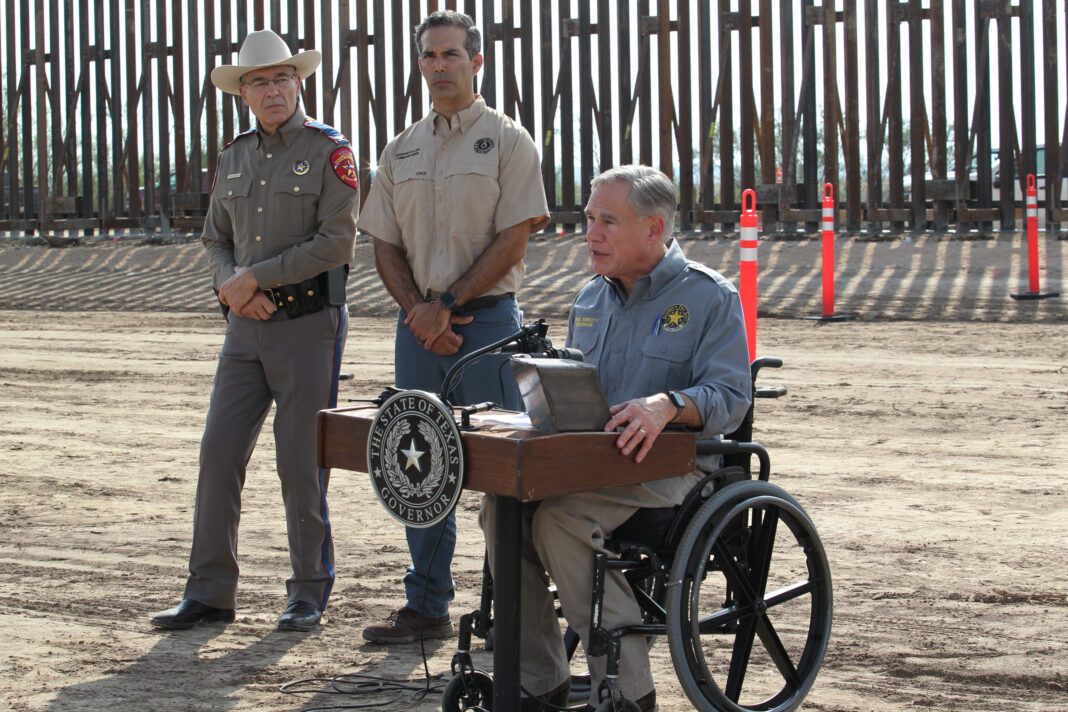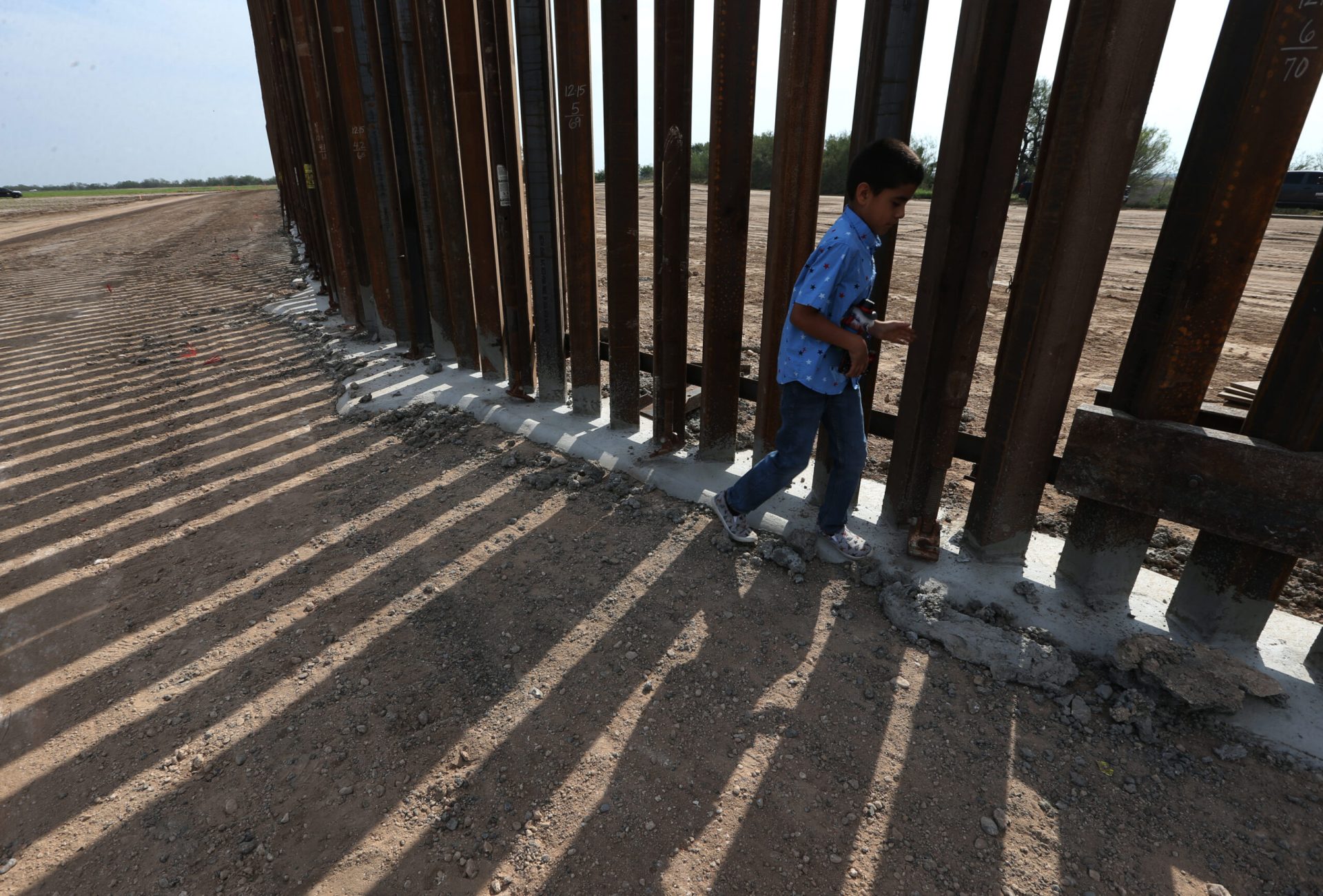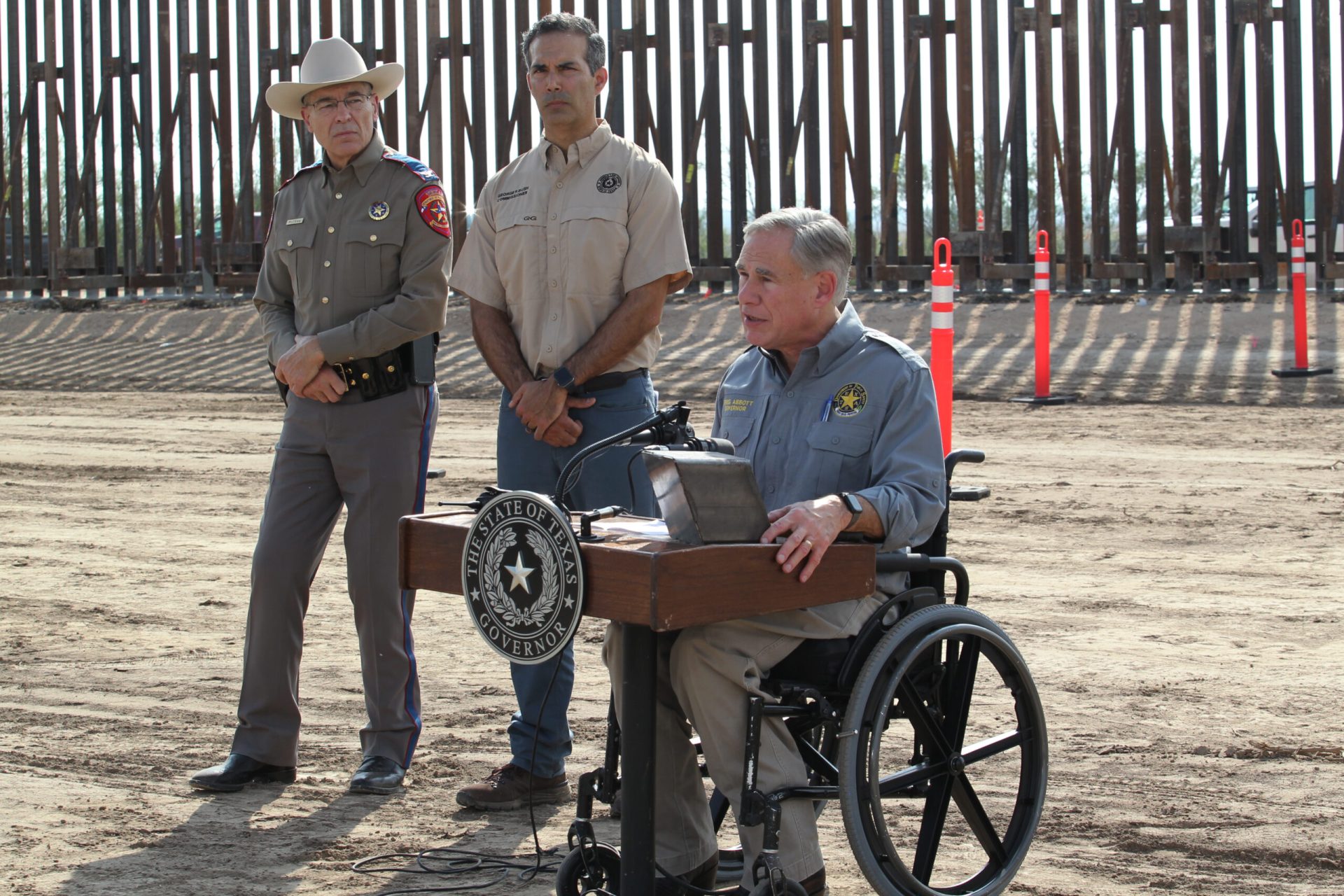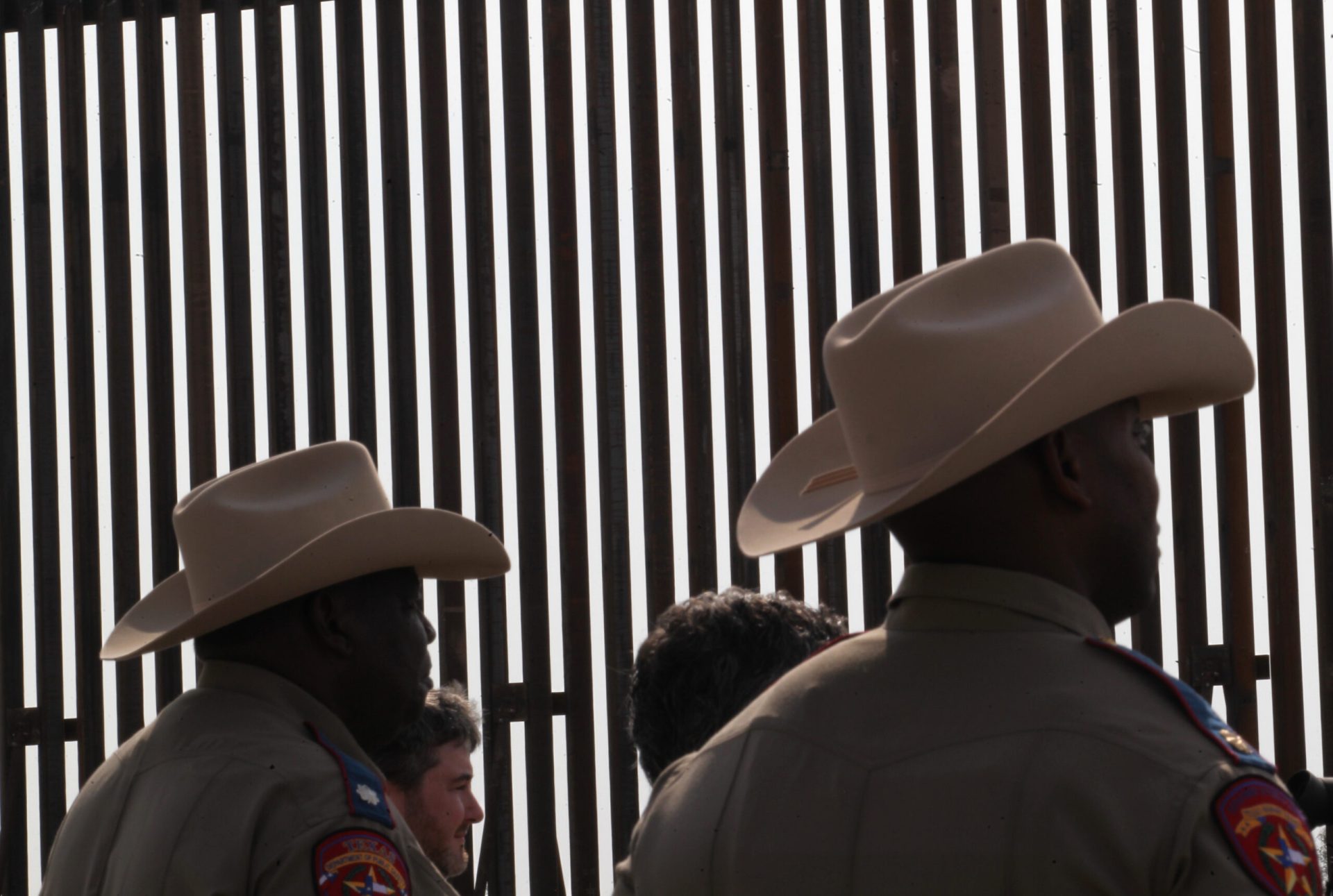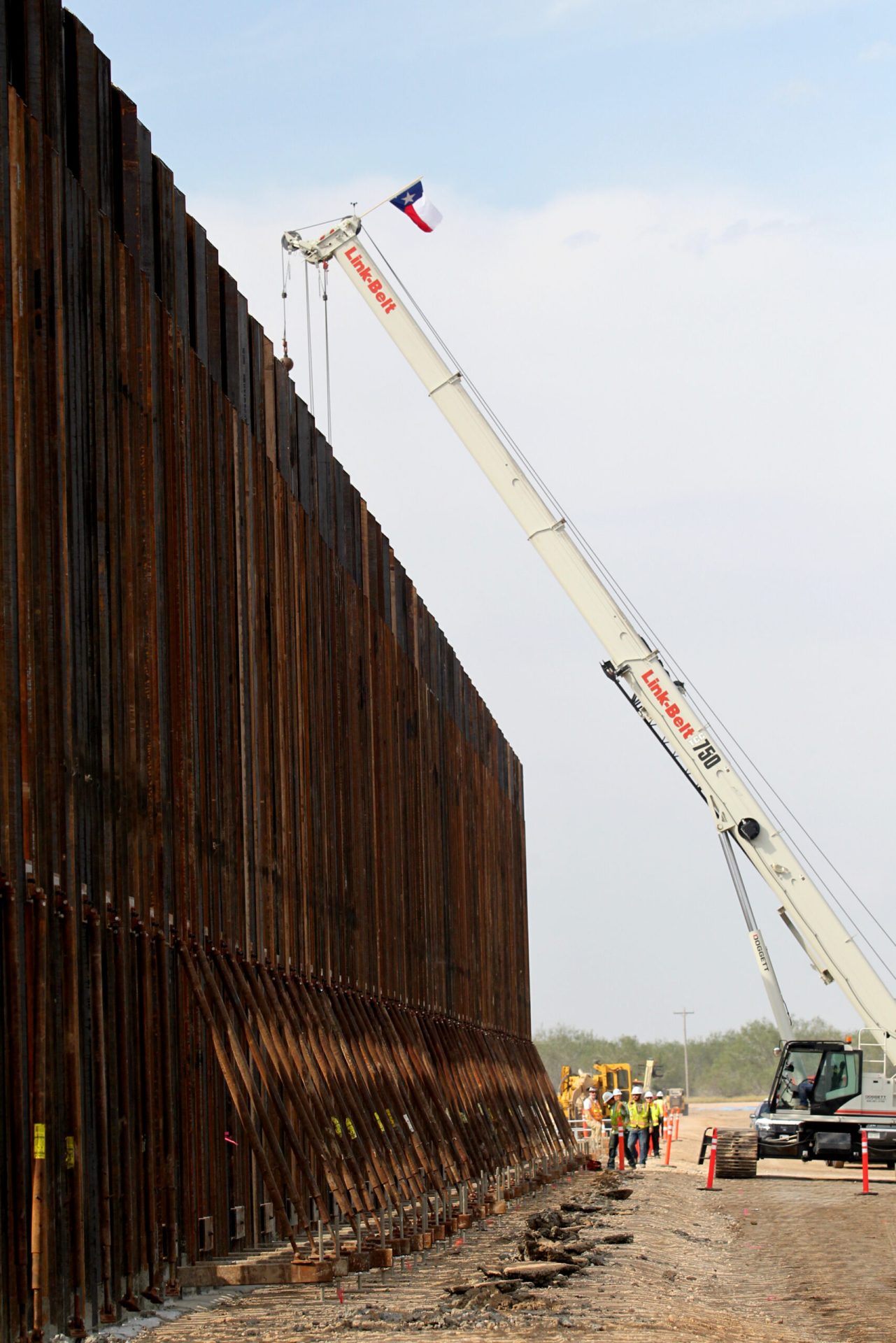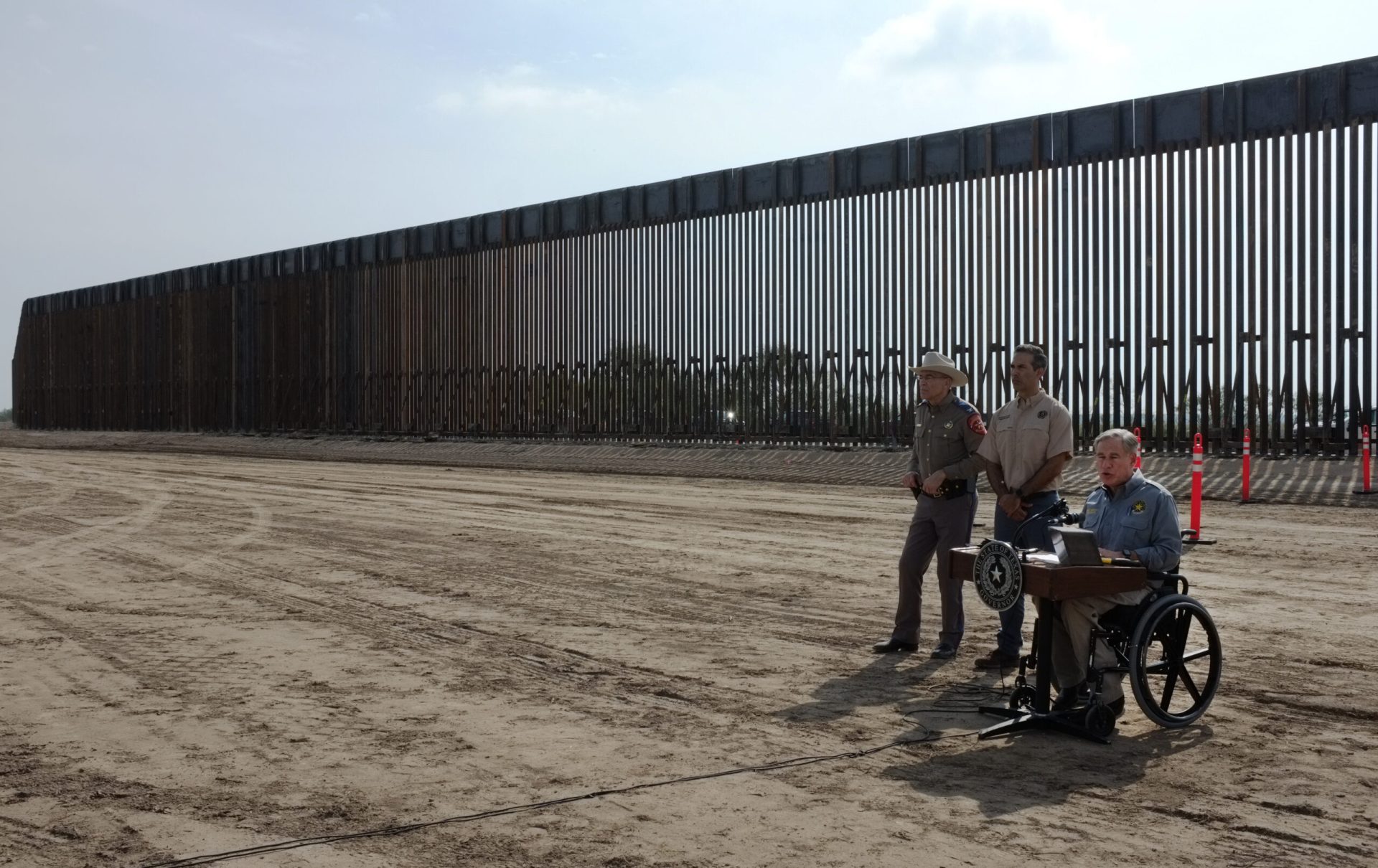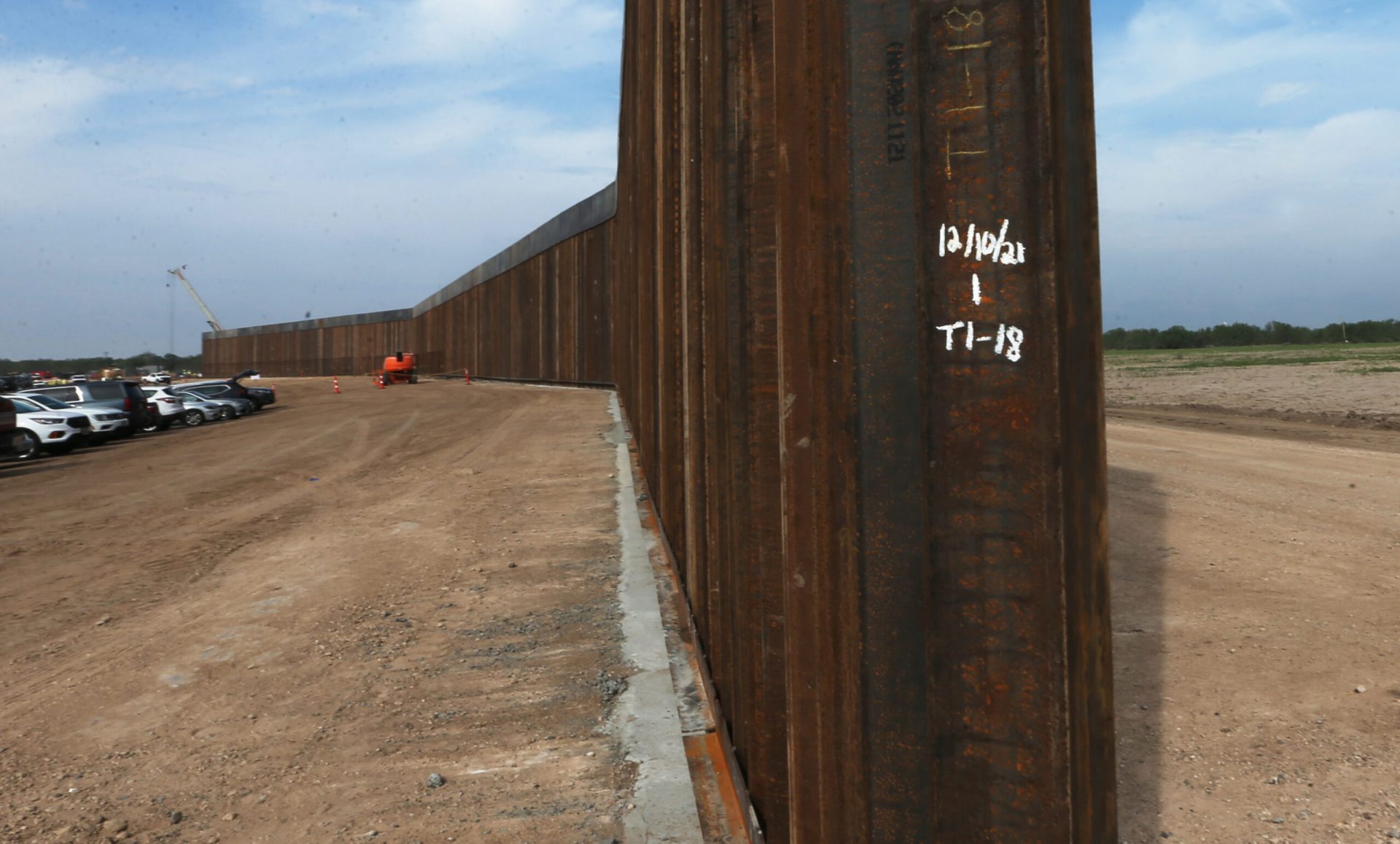Twenty-two days ago, the first contract was awarded to begin construction of a border wall in Starr County, a mile and a half north of the Rio Grande. By Saturday, the construction already spanned 800 feet.
“This border wall that you see behind us is a replication of the border wall that president Trump put up,” Gov. Greg Abbott, who’s running for reelection and often draws comparisons to the former Republican president, said at a news conference held at the site Saturday. “Same material, same concept.”
About a half mile away from the state’s wall was the federal barrier built under the last presidential administration. Abbott intends to close the gap and expand Trump’s vision for the border.
Even the same people were hired to continue the job.
Five contractors were awarded a construction contract, including the $162 million Starr County project awarded to Posillico Civil Inc. based in La Joya. The steel used in Starr County came from a McAllen business, Strong Steel.
Unlike Trump’s border wall efforts which were hampered in the courts by property owners who did not want to give up their land, Texas Facilities Commission Chairman Steven D. Alvis said they’re not facing the same challenges.
Alvis said they’ve had a lot of interest from ranchers.
“They overwhelmingly seem to want this,” he said. “It’s surprising.”
Starr County’s wall is away from the border, generally an area under the International Boundary and Water Commission.
“We’re outside the floodplain,” Alvin said. “We’re a mile and a half or so north of the river. That eliminates a lot of issues. Other than utility crossings and drainage crossings, it’s fairly simple.”
The IBWC previously told The Monitor they did not lease the land and have no involvement in the construction.
The land belongs to the state and is managed by the General Land Office under Commissioner George P. Bush who was also present at the news conference. He sued the federal government in the summer to prompt them to build the unfinished fence, but the lawsuit was later consolidated with another one.
Bush said the rancher who had leased the Starr County land from the state reported seeing up to 100 migrants a day cross through the area and damage crops.
Fencing has also been constructed in the area on private property where landowners agreed to participate and press charges.Both barriers, if trespassed upon, could lead to a migrant’s arrest, but the wall construction started before a prosecution pathway was carved out.
“We’re working right now with the county attorneys and the Border Prosecution Unit,” Texas Department of Public Safety Director Steven McCraw told The Monitor after the meeting.
Justices of the peace, sheriffs using jail space, district attorneys, prosecutors and public defenders all play a part in the judicial chain.
McCraw said the governor’s office is coordinating with Starr County to sort out the details; County Attorney Victor Canales confirmed later, too.
“If we start doing that, there’s going to be a lot of people,” McCraw said, referring to the migrant arrests, adding, “they’ll need to go through the judicial process, and that includes indigent defense. It includes a lot of different factors and all that needs to be worked out.”
McCraw said the goal of the wall is to shift the traffic.
“The whole goal is that they go to the ports of entry, or the federal area, and push them in that … and they’re not trespassing through the landowner’s land.”
Four other contracts will also go into effect soon, Alvis said.
“As we get other sections ready to go, we’ll make sure all five are busy at the same time,” the chairman said.
On a fast day without weather problems, they anticipate advancing the border wall by 200 to 300 feet.
Before the governor closed the news conference, he radioed to construction employees, “panel up.”
A panel was lifted off the ground by a crane, propped vertically over the foundation and set in place.
In a matter of minutes, the wall grew by another 8 feet.

